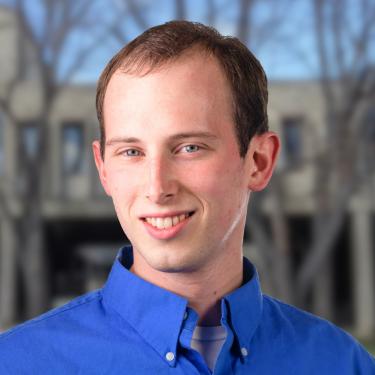
Nick Bottenus
Assistant Professor Nick Bottenus of the Paul M. Rady Department of Mechanical Engineering has been awarded a Webb-Waring Biomedical Research Award for research advancing the state of ultrasound molecular imaging.
The award is given out by the Boettcher Foundation, which invests in leading Colorado researchers during the early stages of their career, with the goal of retaining top scientific talent in Colorado.
Bottenus will receive a $235,000 grant to support up to three years of his biomedical research that pushes the boundaries of what ultrasound imaging – or sonography – can do.
“It was an unexpected honor to win this award,” Bottenus said. “Along with giving us the resources to pursue our research, it means we get to join the broader network of biotechnology researchers and companies in Colorado, so I look forward to the opportunities that brings.”
Ultrasound imaging uses sound waves to see inside the human body. As the machine sends out waves, they reflect off body structures, and a computer receives the “echoes” to create a picture out of them. The images are used to diagnose and direct treatment for a variety of diseases and conditions.
For a lot of his career, Bottenus has worked on improving the design and performance of the ultrasound machine, working on signal and array encoding and decoding optimization problems.
But now Bottenus plans to take his research on the human body to an even smaller scale.
A new development in ultrasound is molecular imaging, which uses tiny, biocompatible, acoustically detectable gas bubbles to help contrast the structures or fluids within the body when observed in ultrasound imaging.
The microbubbles, coated with a shell of targeting molecules, are injected into the bloodstream and circulate until they encounter their specific, target biomarker. They adhere to it and become concentrated within the target tissue. As microbubbles accumulate, they then create a bright echo that ultrasound can detect.
However, the current technology has limitations on its application, with the mapping of only one biomarker possible per image session, which also takes a long time to complete as hundreds or thousands of bubbles amass.
In response to these problems, Bottenus and his research group plan to leverage current research in microbubble engineering and diabetes bioengineering to develop novel ultrafast and super-resolution ultrasound molecular imaging techniques.
With these advancements, Bottenus can detect a single microbubble in real time.
By using this new technology, Bottenus wants to understand the behavior of microbubbles better, while arguing that the scientific community uses an oversimplified model on how they work.
Bottenus argues that microbubbles behave like other biological agents, such as white blood cells, which have similar binding behaviors but do more than simply find their target biomarker and stick there.
“White blood cells can roll, sort of crawl along the surface and detach after they’ve attached,” Bottenus said. “We suspect that microbubbles can undergo all those same behaviors.”
Ultimately, Bottenus’s research will allow for the design of new approaches to ultrasound imaging, new possibilities for multi-target imaging and more rapid diagnostics and treatment for ailments like diabetes, cardiovascular disease and cancer.



